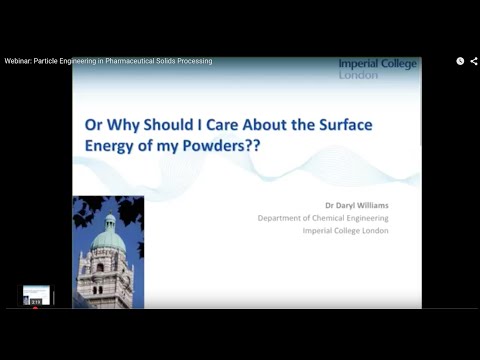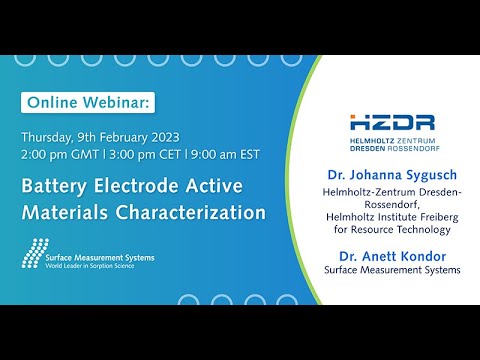
Sorption Science Webinars/Workshops Directory
To keep up to date with our upcoming events please visit: https://www.surfacemeasurementsystems.com/learning-center/webinars/
| Responsible | Daniel Villalobos |
|---|---|
| Last Update | 07/10/2025 |
| Completion Time | 1 day 4 hours 1 minute |
| Members | 249 |

Webinar title: Particle Engineering in Pharmaceutical Solids Processing: Surface Energy Considerations
Topic: This webinar presented by Dr Daryl Williams from Imperial College London reviews the surface energy and surface energy heterogeneity of crystalline solids, methods for the measurement of surface energy, effects of milling on powder surface energy, adhesion and cohesion on powder mixtures, crystal habits and surface energy, surface energy and powder granulation processes.
For more information visit our website:
www.surfacemeasurementsystems.com
LinkedIn: https://www.linkedin.com/company/surface-measurement-systems
Twitter: https://twitter.com/surfacemsystems
Fuel cells
View all
Nowadays many electronic devices are being operated by batteries, including everyday devices (e.g. laptop and smartphones), healthcare devices (e.g. toothbrush), tools, toys, and vehicles as well. The use of batteries is forecast to increase significantly in the upcoming years. Therefore, the development of long and high-performance batteries and also the need to recycle spent batteries in order to ensure the supply of critical raw materials increased significantly in the last years, but is a complex task since the individual batteries have rather complex structures and varying composition.
During the development of the battery materials, temperature stability is one of the key parameters besides energy density, power density, lifetime, charging rate, cost and safety. Furthermore, the understanding of the surface properties and interfacial interactions of the anode and cathode materials is crucial in order to improve and develop efficient manufacturing and recycling processes.
In this webinar we present the surface and interfacial properties of different cathode (LCO, NMC, LFP) and anode (natural and synthetic graphite) materials. Characteristic properties include the specific surface area, the surface energetics at different temperatures measured with inverse Gas Chromatography (IGC) as well as water and cyclohexane sorption behaviour by Dynamic Vapour Sorption (DVS). Furthermore, we are going to present some results on wettability characterization using optical contour analysis and the Washburn method, as well as bubble-attachment and analytical particle solvent extraction tests. We also discuss which challenges arise during the recycling of spent lithium ion batteries by using the separation process of froth flotation.
Dr. Sygusch and Dr. Kondor will, among other things, give a detailed introduction to the Inverse Gas Chromatography and Dunamic Vapor Sorption techniques. With a live Q&A to finish the session, this is an unmissable opportunity to gain fresh insight into this vitally important topic from two leading experts.